Political Polarization in America Explained Through Housing Choice

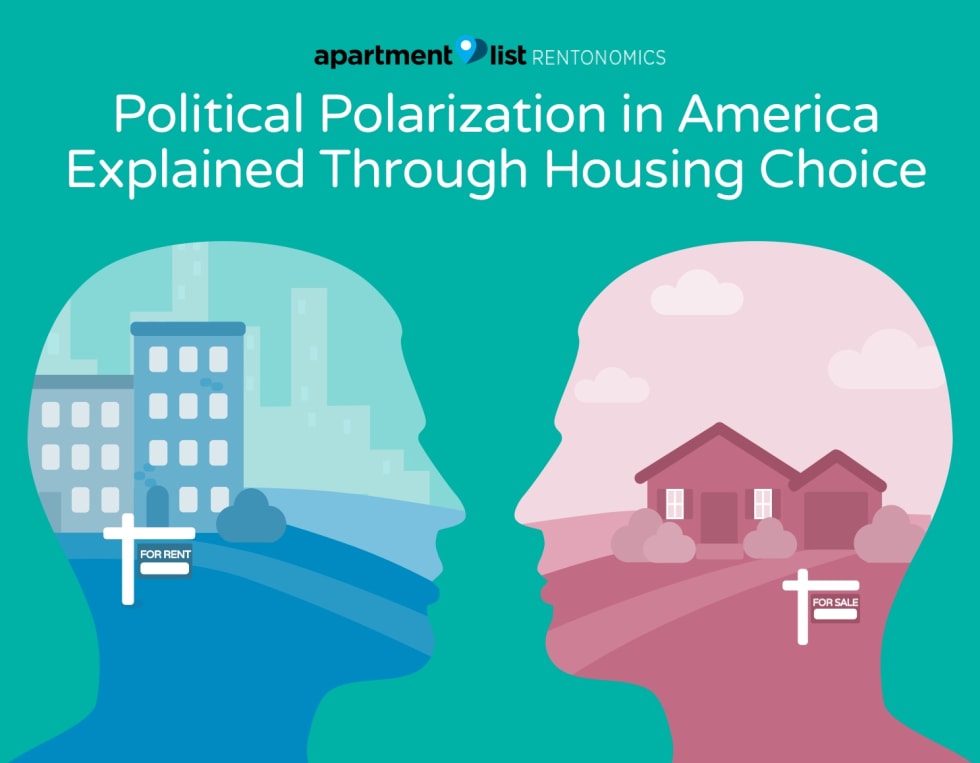
With American political polarization more divisive than it has ever been in the modern era, pundits have been scrambling and struggling to explain the divide within our nation.
The 2018 midterm elections showed us that this trend is more pronounced than ever, but unlike previous elections, 2018 has given us valuable insight into how the problem can be explained through the lens of housing choice. This insight has potential to enable us to construct solutions which can bring us together.
Through our research, we examined how housing choice correlates with how we see ourselves fitting within the American Dream, which can have a strong influence on how we choose our elected officials. We found:
- Post WWII, the American Dream shifted from a mantra for social mobility to include more material items which strongly emphasized owning a home- a concept adopted and encouraged by the current Presidential Administration
- Studies have shown that conservatively inclined voters are more likely to use the current popular definition of the American Dream to guide their personal path to success
- Conservatives tend to move to places where homeownership is more easily attainable even if that means staying away from cities where jobs are being created. Their liberal counterparts tend to move to places where jobs are plentiful and the ceiling for economic opportunity is higher- even if the cost of living delays homeownership
- There is a strong correlation between congressional districts with a higher percentage of renters and Democratic representation in government
Introduction
E pluribus unum. Translated from latin means "out of many, one” is the traditional motto of the United States of America. Adopted by Congress in 1782, it was meant as a foundation for the country to be built upon and a value to aspire to. A nation of natives and immigrants- imperfectly and at times violently brought together to defy historical odds and prove that a nation could boast a claim as a cultural melting pot and show the world its strength is truly derived from cultural diversity unseen by nations before. Born from this ethos was the concept of the American Dream- a vision for what America could be and what we should collectively aspire to.
Today, how we connect to the American Dream and what it means to be an American has a lot to do with how we view our modern society- a society experiencing one of the most divided periods in our relatively brief national history.
The 2018 midterms elections were a referendum on the state of the American political system- and more broadly speaks to the state of American culture in 2018 and into the new year. The choice of the American people, who turned out in record numbers, revealed an inconvenient truth about where we exist in the perspective of history- we live in one of the most divided times in our history. Despite the fact that 55% of Republicans and 60% of Democrats are happy with the results of the election, 46% of Americans think partisan relations will remain the same in Washington, while 44% believe polarization will get worse before we see change. Pundits and everyday people have argued about why America has become so divided along political lines but there have been as many opinions as there are people in the debate and a consensus has not been reached.
Examination of the election results reveals that we are most divided along the lines which distinguish the places in which we live. Urban areas went strong for Democrats, suburban areas were political battle grounds, and rural areas were as red as ever across the country. This trend held regardless of which region a voter calls home- which lends itself to a possible cause- political polarization could be determined by how we view ourselves within the concept of the American Dream and how that can influence our decisions on housing and where to live. This self-sorting geographic polarization also has the potential to exacerbate our political partisanship which has the potential to create a cycle of division across voting precincts, counties, and even states.
This divide has shown how we as Americans can differ drastically from one another, but it may also lead us to the best course of action for moving our nation forward: making more parts of America affordable through accessibility and reframing the American Dream to fit with the reality of what modern America is. A simple, yet powerful pathway to reconnect with the E pluribus unum ethos to pull us in the direction of becoming a more united United States of America.
Tracking the Divide By Comparing College Educated Millennials
One of the most evident places we can see a definitive choice in our divide is when and where we make significant and life altering decisions. An analysis of data from the U.S. Census shows that the most mobile Americans are those in their twenties into their thirties. This is a time of significant change for many Americans as they strike out on their own for the first time and begin to have life altering experiences personally and professionally as they seek their version of the American Dream.
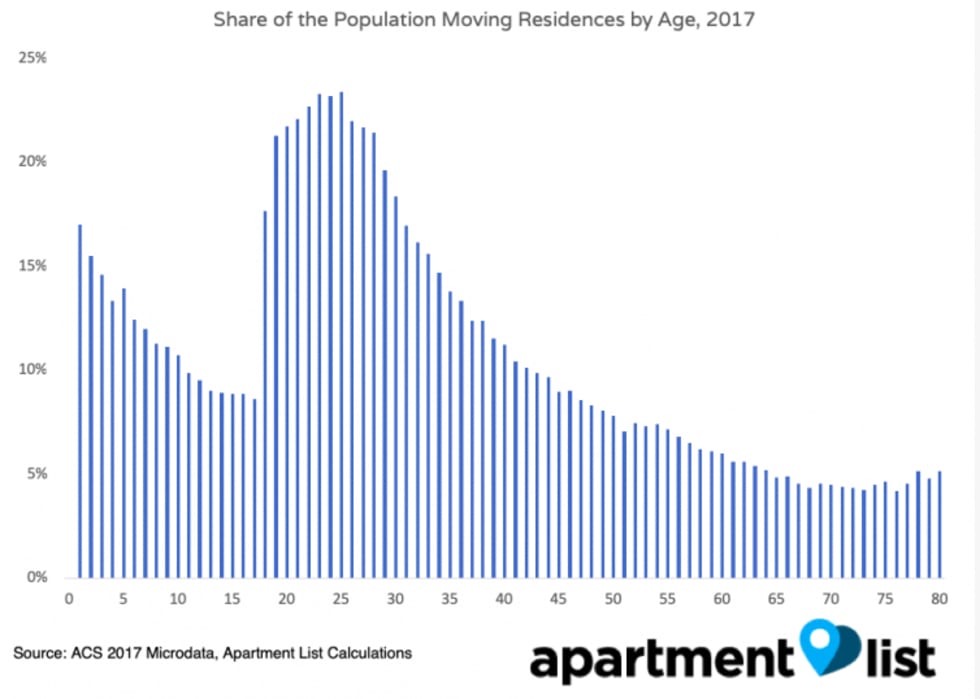
Within this group we can explore the decisions of college educated Americans as they enter and exit four-year institutions. It certainly cannot be understated that college is not a viable option for many Americans, but according to the U.S. Department of Education, it is a pathway to expanded opportunities and gives many students a choice on how they will pursue the American Dream; something that reveals how preferences and views can motivate a graduate’s decision making process once they obtain their degree.
It is worth noting that the vast majority of Americans plan on owning a home at some point in their lives- something that many currently consider part of the American Dream. This trend is even more true among those with college education. Nearly 90% of respondents from a recent Apartment List survey said they expect to own a home in the future. However across education levels we observed an increase in expectation of homeownership with more education. This demonstrates that our concept of educational attainment is tied to economic opportunity, but how we prioritize what that means is something that can impact our preferences and drive us to make decisions that can geographically separate us. This is when our political inclinations- whether liberal or conservative can begin to impact our actions that ultimately determine the communities in which we settle.
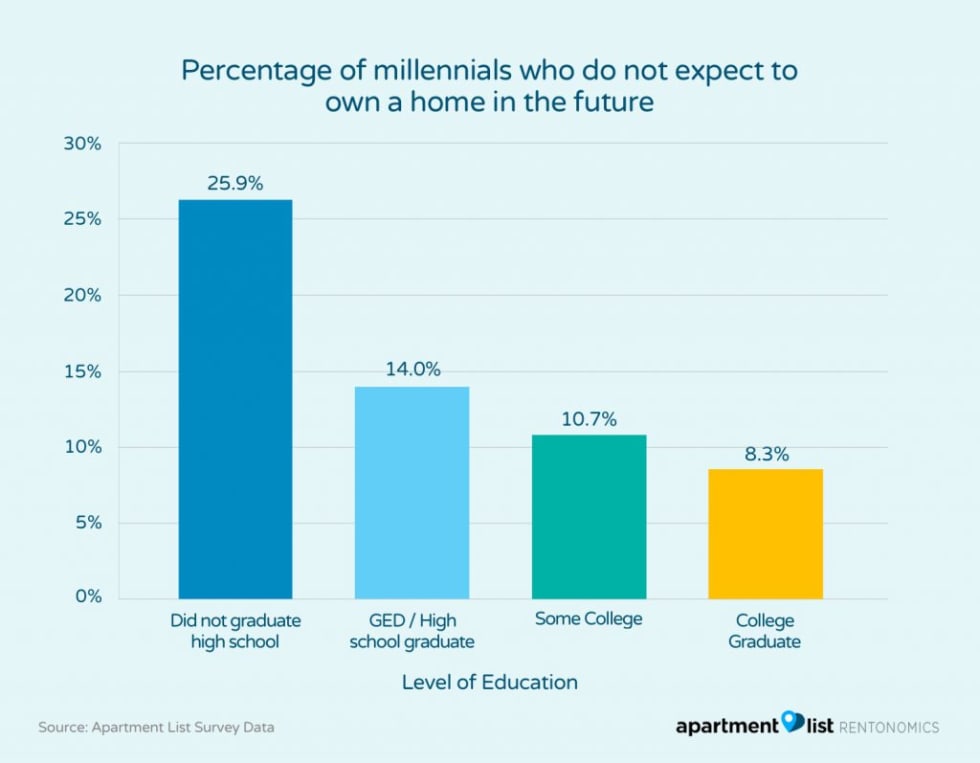
While students of all political affiliations attend a wide variety of places to study, two recent studies ranked the “The 25 most conservative colleges in America,” and “The 25 most liberal colleges in America.” Although not perfect, this is a way to estimate the political backgrounds and preferences of students. A student entering college is likely to make a decision that is at least partially informed by the reputation and social environment that a campus creates for its students. The results of the rankings come with little surprise as many of the schools ranked on the conservative list are located across the south and in Utah and many of the liberal schools are located in the northeast or on the west coast.
Tracking where these schools draw their study bodies from and following where their alumni go reveals even more about the preferences of liberal versus conservative minded individuals as they choose where to start their careers and lives after college in pursuit of the American Dream.
Clear patterns emerge as to where these graduates come from. At the most conservative schools, patterns emerge that students come from the south while their liberal counterparts come from both coasts. Ironically, neither side draws heavily from the Midwest with exception of Northwestern University and Kenyon College which are both ranked in the top 25 of liberal colleges and located in the Midwest.
These findings are relatively intuitive- as the median college student will likely go less than 100 miles away from home. But students armed with a college degree have been proven to be significantly more geographically mobile than their counterparts without a college degree and are overall more likely to search for a job in multiple cities. So when it comes to mobility, these graduates have a significant amount of choice as to where they move, regardless of political preference.
For many reasons, some college graduates will “boomerang” and move back home with their parents but a 2016 study found that only 10 percent of millennials who had completed at least a bachelor’s degree lived at home. This understanding makes it important to know where these graduates are going and perhaps more imperative to understanding their choice is becoming familiar with the characteristics of places where they are going.
Several key data points reveal how the mobility preference of liberal versus conservative college graduates can indicate trends in how people connect to the American Dream and how that contributes to political polarization.
- A 2018 Apartment List Survey found differences in millennials who planned on purchasing a home and found that those that were on the left of the political spectrum were less likely to plan on purchasing a home, compared to those further to the right on the political spectrum.
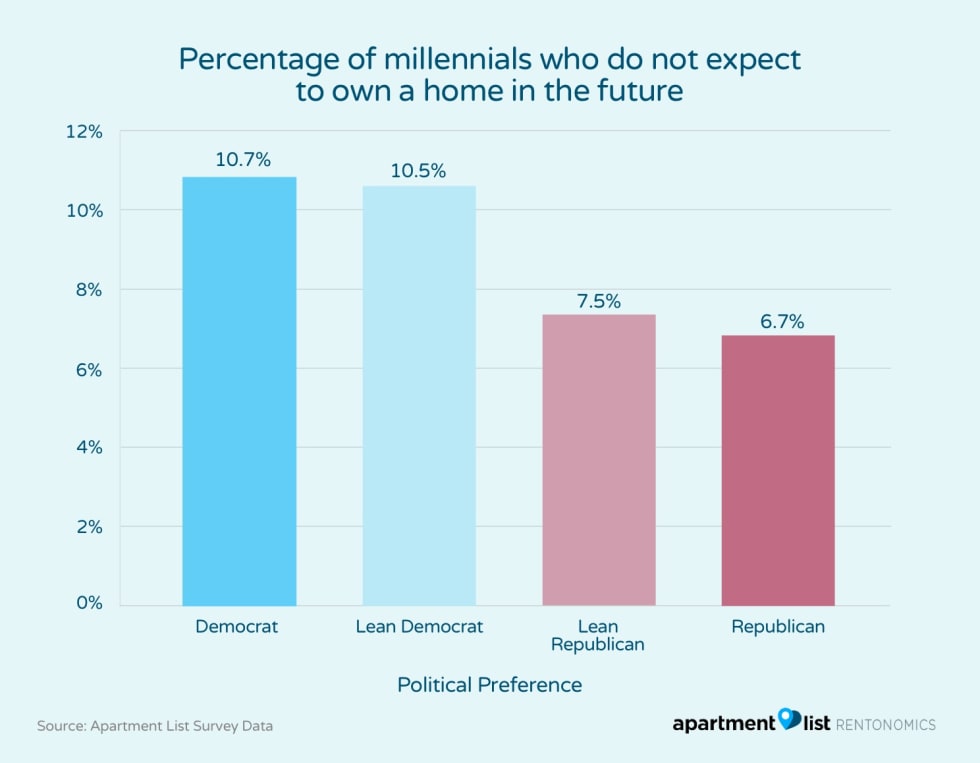
- Conservative college graduates move to the top 70 metro areas at lower rates than their liberal counterparts. Our analysis found that on average 64.3 percent of graduates from conservative schools moved to top 70 metro areas while 81.8 percent of graduates of liberal schools went to top 70 metros.
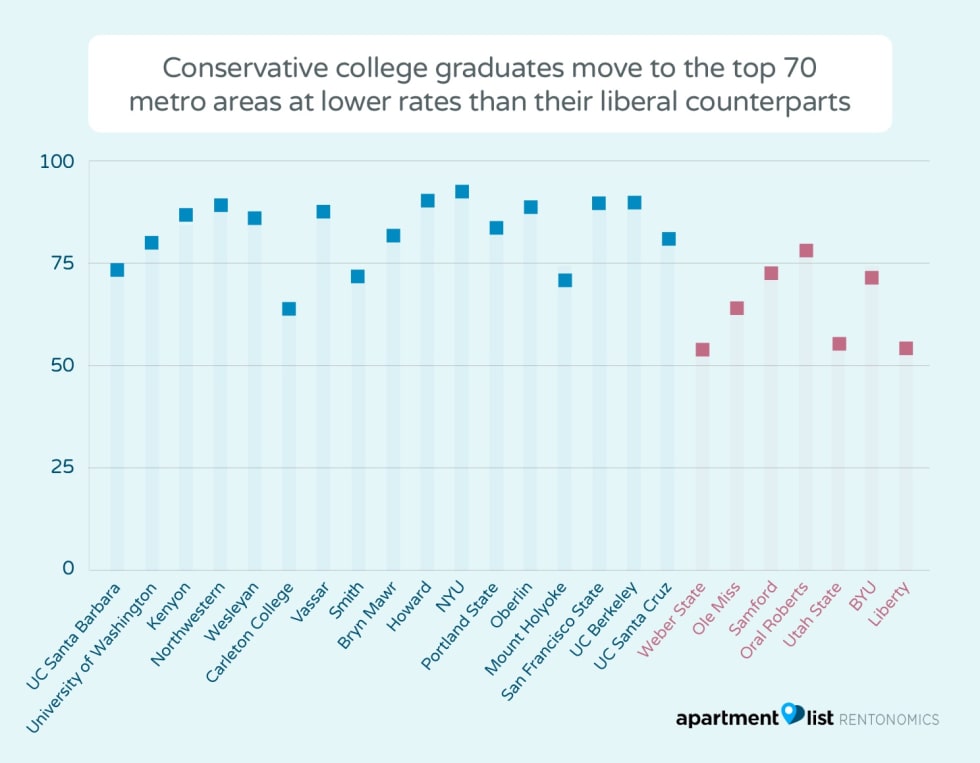
- Conservatives who move to cities tend to choose cities where the cost of owning a home is less than half of the places their liberal counterparts choose. After examining the places where at least 5 percent of graduates of the past ten years have gone, we discovered that graduates of conservative colleges moved to Tulsa, Nashville, Dallas, Memphis, Atlanta, Salt Lake City, Jackson, Washington, D.C., and Birmingham. The average median cost of a home in those areas is just under $210,000. Graduates of liberal colleges tend to migrate to San Jose, Atlanta, Los Angeles, Philadelphia, Chicago, New York, Boston, Seattle, Washington, D.C., San Francisco, Hartford, Minneapolis-St. Paul, and Portland, OR where the average median cost of owning a home is just over $430,000.

- Liberals tend to move to cities that are good for jobs. Despite going to cities that are more expensive, of the cities graduates of liberal colleges are going to 83 percent are ranked in the top 25 best cities for job seekers while of the cities conservatives go to, only 25 percent are ranked as good for job seekers. Liberal college graduates are more likely to chase professional opportunity than their conservative counterparts.
- Conservatives tend to move to cities where religion is an important factor. Of the cities that conservatives moved to after college, nearly all of them had over 45% of residents identified as very religious.
- Based on the modern perception of the American Dream, self-identification of being an average American coupled with more structured ways of thinking, resistance to change, and preference for clear answers, conservatives are more likely to choose a location based on how they can take tangible steps towards achieving the current view American Dream- one that ranks homeownership as its top priority.
The American Dream Defined and Re-Defined
Observing these trends among college educated millennials informs us on what is happening, but understanding the why behind these movements is equally as important as we try to better understand our divides and when we look at the the American Dream, the reasons start to become more clear.
The concept of the American Dream is one that has evolved over time. Initially coined in the depths of the Great Depression by writer James Truslow Adams as a rallying cry for an American identity and social order. The American Dream was put forth as an aspirational set of ideals designed to bring a young nation of immigrants together during one of the country’s most trying times around the concept of opportunity and upward mobility. Adams defined his vision as “a dream of a social order in which each man and each woman shall be able to attain to the fullest stature of which they are innately capable, and be recognized by others for what they are, regardless of the fortuitous circumstances of birth or position.”
Initially conceived as an ethos to combat social inequality, this vision would by our current definition be categorized as a quite liberal vision for the country. Despite its initial intent from the creator of the term, the American Dream began to undergo a significant change in the post-World War II era; moving from a socially-inclusive rallying cry toward placing significant emphasis on individual liberty and free market capitalism- marking a shift in the narrative (by today’s political standards) from the left to the right.
This new vision featured home ownership as a central component of what it means to be truly American- something that has been codified by Merriam-Webster Dictionary in their definition of the term. Since that shift in the post-World War II and the rise of suburbia era, the view of the American Dream has remained relatively unchanged. Even the current administration has eluded to the fact that achievement of the American Dream requires owning a home, a fact that Yale economist, Robert J. Schiller states may have “dangerous consequences,” including contributing to the financial crisis in the early 2000’s.
But what does that mean for America today- a nation that has seen significant recovery of the housing market for both homeowners and renters? A recent report polled Americans on the “top ingredients” of the American Dream and found that these inputs are:
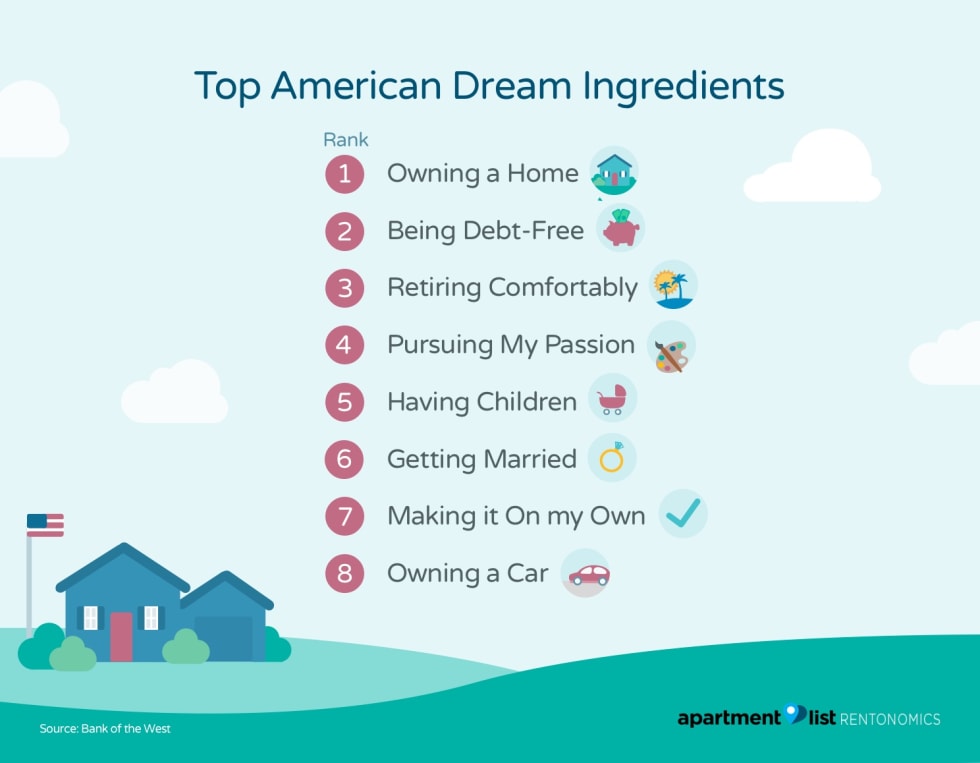 If we look at how Americans choose their political affiliations and where they choose to make their home, the connection to how we view the American Dream- as a vehicle to opportunity or material markers that prove our “American-ness” becomes more apparent in our decisions.
If we look at how Americans choose their political affiliations and where they choose to make their home, the connection to how we view the American Dream- as a vehicle to opportunity or material markers that prove our “American-ness” becomes more apparent in our decisions.
Preferences and Views Identified
As it turns out, psychology can and does play a significant role in our political preferences and how we view the American Dream. A 2016 study from Northwestern University found that people who identify as liberal and conservative use their brains in different ways to solve problems. The study found that “liberals are more flexible, and tolerant of complexity and novelty, whereas conservatives are more rigid, are more resistant to change, and prefer clear answers.” The study concluded that where we fall on the political spectrum can be attributed to our overall strategy to solving problems.
Other studies conducted over the past several decades have yielded similar results. This includes a 2014 Pew Research Center study which found that Conservatives think of themselves as a “typical” American at significantly higher rates than liberal Americans.
Further, a 2017 study found that the vast majority of Americans felt that they were on their way to or had already achieved the American Dream- interestingly enough, among that demographic, 41 percent of those that self-identified as “Republican” or “Lean Republican” believed they had achieved the American Dream but only 32 percent of “Democrat” or “Lean Democrat” felt they had achieved the American Dream. 91 percent of all respondents felt that homeownership was either an “essential” or “important, not essential” part of achieving the Dream.
This is in line with a recent Apartment List study which found homeowners are more likely to support Republican candidates while renters lean Democrat. By the current definition of the American Dream, homeowners are more likely to feel as though they have already achieved or are on their way to achieving the American Dream- something that can impact civic engagement and can have significant political as well as policy ramifications. These connections to what the perception is to be an American and how we define to our connections to our Americanness can play a crucial role in partisan divides- a key component of which is our view of and subsequent prioritization of homeownership and the places we choose to make our home. This was on full display in the 2018 midterm elections-particularly in the House of Representatives where we saw a “blue wave” move through suburban areas while rural areas- full of homeowning voters remained red and urban areas- full of voters who rent their homes remained blue.
Fully understanding why an individual chooses a particular political stance is incredibly challenging as it is a deeply personal decision and can change across the spectrum over time. However, based on data and statistics we have access to, where we choose to live can have a significant impact on how we view the American Dream and that view can determine where we go and how we choose to live our lives.
How Liberal and Conservative Ideology See the American Dream Differently
How individuals connect to the American Dream and what it means to be functioning and successful in society is a deeply personal choice and one that is impacted by a multitude of factors, many of which are impossible to scientifically quantify.
But there has been a significant amount of science done to help us understand how we make the choices that define our political beliefs. A 2013 study by researchers at the University of Minnesota and the University of Edinburgh built on a 2010 study that found indicators for Right-Wing Authoritarianism could be measured. The 2013 study argued that the concept of Traditionalism “tapped constructs of authoritarianism, conservatism, and religiousness and suggested these three represent a ‘strongly mutually correlating cluster’... At the heart of this concept of Traditionalism is an individual’s orientation toward socially established authorities and their symbols. Traditionalism is thus conceived as a dispositional feature at the foundation of attitudes towards a range of established authorities, whether political, religious, social or familial.”
In the modern era, this connection to Traditionalism can explain how the modern conservative is more likely to feel connected to what it means to be an American by connecting to the American Dream- and its modern construct which features homeownership as a driving factor for what American success looks like. It is not an unfair assumption to conclude that conservatively inclined individuals would take the necessary tangible steps to achieve the American Dream by prioritizing homeownership and positioning themselves to be ready to purchase a home to demarcate their societal success as an American.
Conversely, those that are politically on the left have been associated with a more “outside the box” approach to how they view the world. This inclination would mean that liberals are not necessarily tied to what the current definition of the American Dream is- particularly as it relates to homeownership. This sentiment can be reflected in remarks on the American Dream from President Barack Obama in 2012. On the American Dream, he said "I think the history of the United States, the reason we became an economic superpower is because, not always perfectly, not always consistently, but better than any other country on Earth, we were able to give opportunity to everybody. That's what the American dream was all about."
The focus on opportunity is where President Obama, a Democrat, chose to focus his view on the American Dream. Now his view is not representative for all liberally inclined individuals in the United States but it is a window into how the former leader of the Democratic party connected to a vision of the American Dream more in line with its initial conception than with its modern and significantly accepted interpretation. Does this mean that liberals are more likely to denounce homeownership and more likely to rent? Obviously not, but it would not be a stretch to conclude that liberals may be more inclined to chase opportunity as their version of the American Dream as opposed to the material items we consider to be the pillars on which the Dream rests today.
Tracking mobility through political preference is certainly a significant challenge, however, examining the choices and demonstrated preferences of college students and graduates -a significantly mobile group- can help us determine what decisions are being made by Americans on the left and right of the political spectrum.
How the Renter Versus Homeowner Divide can Explain Our Polarization
The decisions between what success looks like is profoundly affected by how our personal preferences define success. Our definition of success has an impact on our personal lives, but it also has an effect on the places we call home and ultimately how our government operates
We recently conducted two studies, one on the voting preferences of renters versus homeowners and one on the where elected officials are taking action on housing policy. These studies revealed that renters are a voting bloc that tend to vote for Democratic candidates while Homeowners are more likely to support Republican candidates. And although the this new Congress will look different, in the previous Congress (serving January 2017-January 2019) there was a significant correlation between the proportion of renters and Democratic representation and the percentage of Republicans representing districts that saw a smaller share of renters in their district.
We found that this correlation had a significant impact on who in Congress was advocating for housing policy particularly in the House of Representatives- meaning that issues related to housing fell into the agendas of Democratic lawmakers in the House. Additionally, the two most significant pieces of legislation that have been introduced in the Senate have come from California Senator Kamala Harris and Massachusetts Senator Elizabeth Warren-who introduced legislation that was aimed at helping renters across the United States (and potential 2020 Presidential Contenders looking to build a liberal democratic coalition capable of winning the Oval Office). Now this legislation may not have an immediate impact on where we choose to live but it does show that the divide on where we choose to live has a significant impact on who represents us and how that representation advocates for the housing rights of Americans.
Now, there are many factors that go into making the decision of renting versus home owning, but the connection between the perception of the American Dream and homeownership is one that cannot be understated. Our different motivations for what success looks like has a significant impact on the places we live and our preference for how we believe we can collectively solve the country’s challenges. If Americans with conservative beliefs continue to move to regions where they can achieve the goal of homeownership and connect to their understanding of the American Dream and liberal-minded individuals continue to chase employment opportunities in urban centers, there may be no end in sight for our divide along partisan lines.
Conclusion
As the nation moves forward from the 2018 midterm elections and into the what will almost certainly be one of the most contentious and scrutinized presidential election seasons in history, understanding our political divides will serve as a diagnosis to help us cure one of America’s most pressing socio-political issues.
Solving the issue will take more than addressing affordability issues in urban centers or pushing various forms of housing policy through Congress. How we as individuals connect to what it means to live in America and in pursuit of the American Dream is at the core of our divide. Instead of working to fit our current society into a model of success developed over 70 years ago, it may be time to update our vision for what it means to achieve the American Dream. A small yet incredibly significant change that just might be at the center of what it will take to bring the country together as we move forward.
Share this Article
